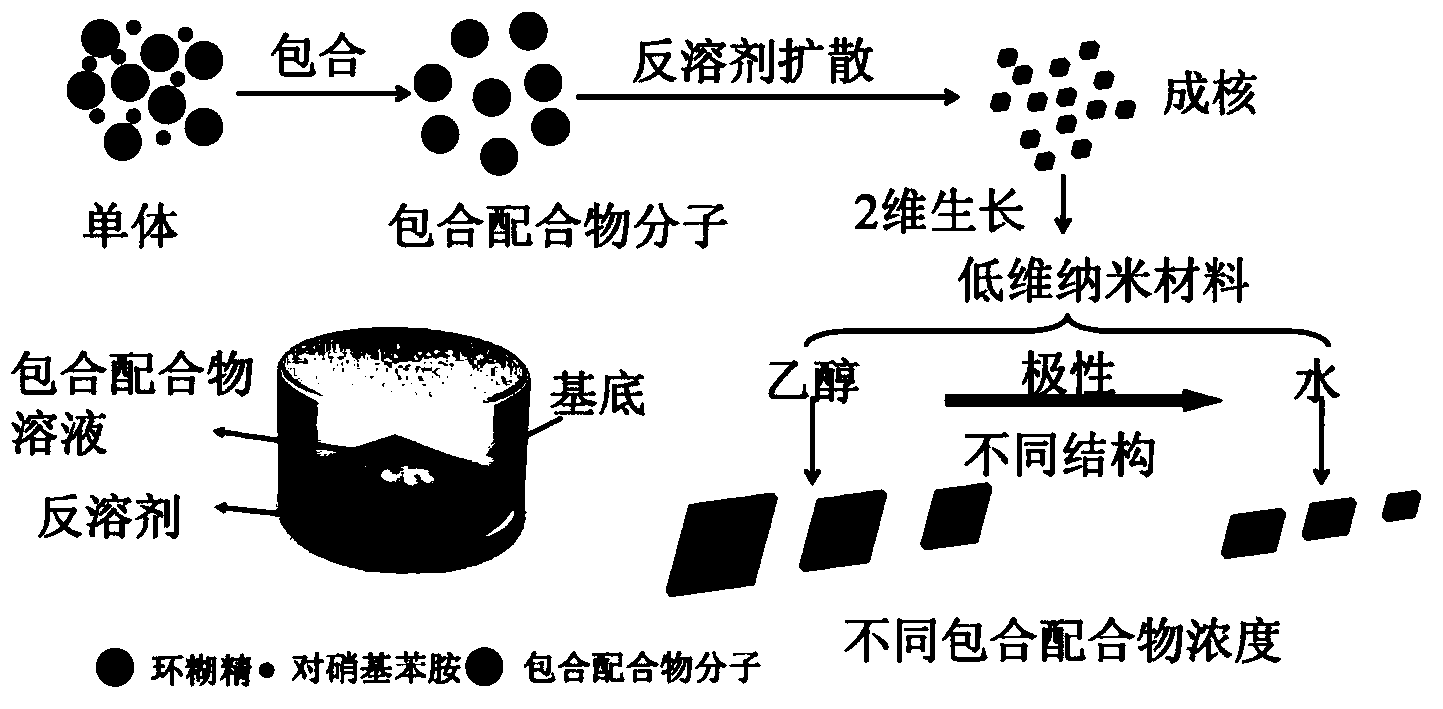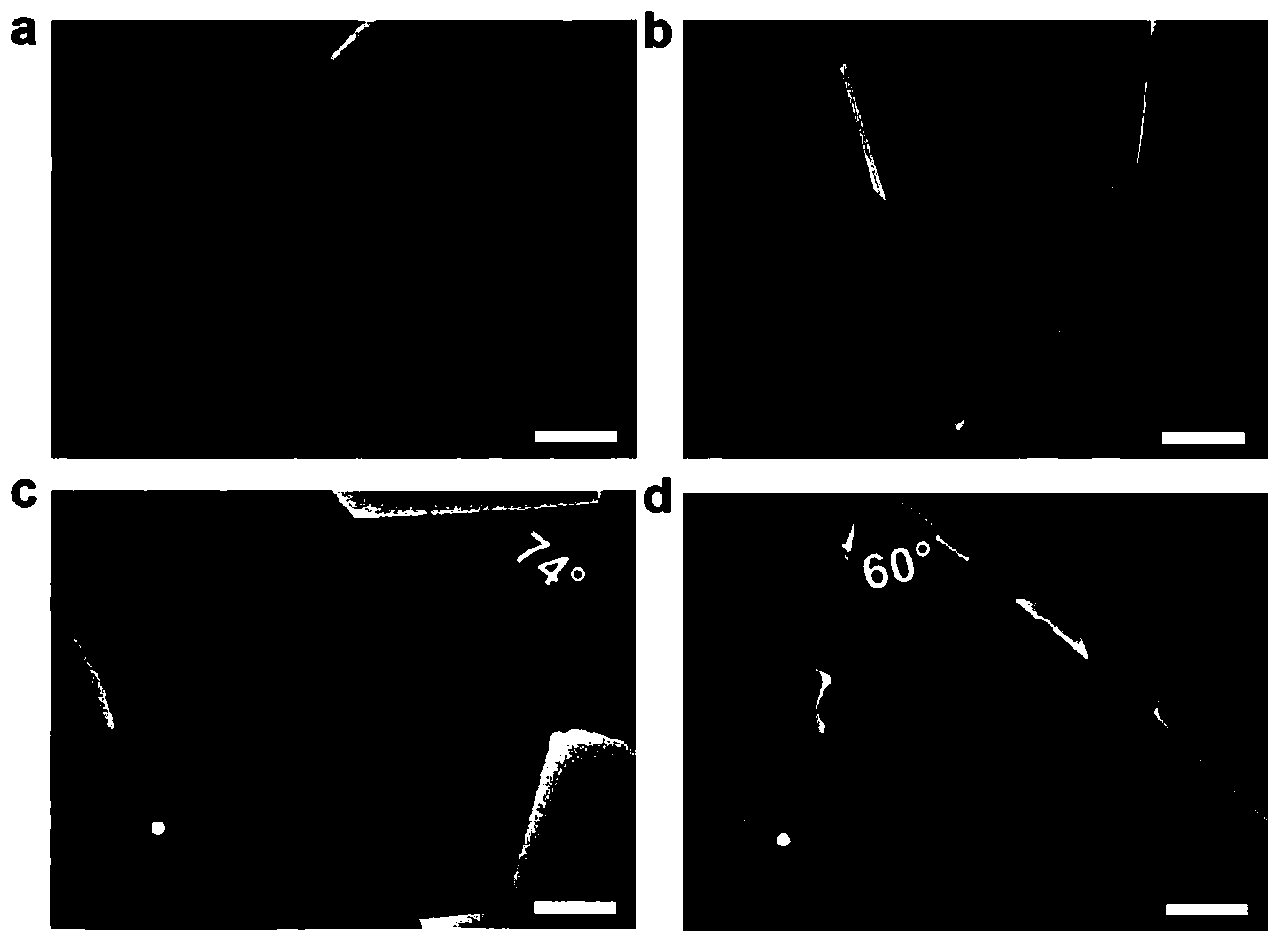Construction method of low-dimensional organic frequency-doubling crystal
A technology of frequency doubling crystals and organic crystals, which is applied in the construction of low-dimensional organic frequency doubling crystals, and can solve the problems of limited application and no second harmonic response of bulk materials.
- Summary
- Abstract
- Description
- Claims
- Application Information
AI Technical Summary
Problems solved by technology
Method used
Image
Examples
Embodiment 1
[0041] Example 1. Controllable synthesis of low-dimensional organic frequency-doubling crystals with different structures
[0042] 0.1 mmol of p-nitroaniline and 0.1 mmol of β-cyclodextrin were sonicated into 20 ml of water to form a stable aqueous solution. The aqueous solution was vigorously stirred overnight to form an aqueous inclusion complex aqueous solution with a molar ratio of p-nitroaniline and β-cyclodextrin of 1:1. Then take out 20 microliters of the inclusion complex solution and drop it on the monocrystalline silicon substrate, put the monocrystalline silicon substrate into a beaker containing 3 milliliters of anti-solvent ethanol and seal it. To stabilize the growth of low-dimensional organic crystal materials, let the aqueous solvent evaporate slowly at room temperature for 2-3 days. The obtained low-dimensional organic crystal material was dried in a vacuum oven at 60°C for 4 hours to remove the remaining solvent, and used for future nonlinear optical tests. ...
Embodiment 2
[0046] Example 2. Selecting other nonlinear optical molecules and host molecules to construct low-dimensional organic frequency-doubling crystals
[0047] 0.1 mmol of p-nitroaniline and 0.1 mmol of γ-cyclodextrin were sonicated into 20 ml of water to form a stable aqueous solution. The aqueous solution was vigorously stirred overnight to form an aqueous inclusion complex aqueous solution with a molar ratio of p-nitroaniline and γ-cyclodextrin of 1:1. Then take out 20 microliters of the inclusion complex solution and drop it on the monocrystalline silicon substrate, put the monocrystalline silicon substrate into a beaker containing 3 milliliters of anti-solvent ethanol and seal it. To stabilize the growth of low-dimensional organic crystal materials, let the aqueous solvent evaporate slowly at room temperature for 2-3 days. The obtained low-dimensional organic crystal material was dried in a vacuum oven at 60°C for 4 hours to remove the remaining solvent, and used for future non...
Embodiment 3
[0051] Example 3. Test of second-order nonlinear optical properties of a single low-dimensional organic frequency-doubling crystal
[0052] For organic molecules with nonlinear optical properties, since they aggregate and assemble into centrosymmetric crystal structures, their crystal materials have no second harmonic response. By selecting suitable host molecules, the non-centrosymmetric arrangement of guest molecules can be induced using the strategy of host-guest inclusion coordination self-assembly. At the same time, choosing different anti-solvent systems can induce guest molecules to aggregate into low-dimensional organic frequency-doubling crystals with different structures. These low-dimensional organic frequency-doubling crystal materials have strong second harmonic response. image 3 Schematic diagram of the principle of second harmonic generation for low-dimensional organic crystals.
[0053] The second-order nonlinear optical properties of low-dimensional organic...
PUM
 Login to View More
Login to View More Abstract
Description
Claims
Application Information
 Login to View More
Login to View More - Generate Ideas
- Intellectual Property
- Life Sciences
- Materials
- Tech Scout
- Unparalleled Data Quality
- Higher Quality Content
- 60% Fewer Hallucinations
Browse by: Latest US Patents, China's latest patents, Technical Efficacy Thesaurus, Application Domain, Technology Topic, Popular Technical Reports.
© 2025 PatSnap. All rights reserved.Legal|Privacy policy|Modern Slavery Act Transparency Statement|Sitemap|About US| Contact US: help@patsnap.com



